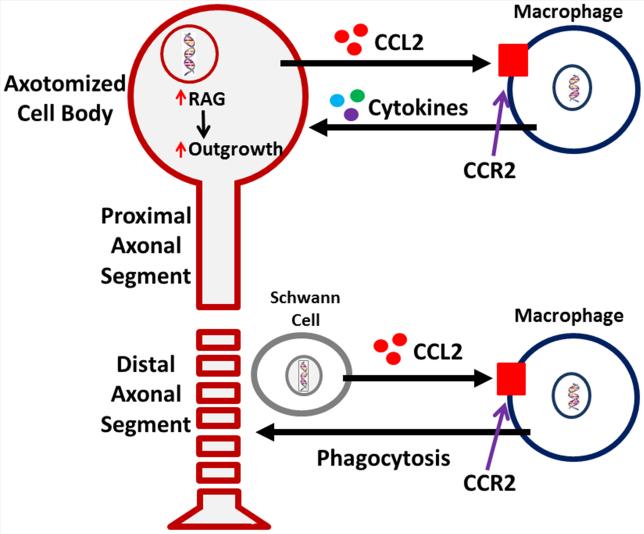Figure 1.
A novel perspective on the response of macrophages to peripheral axotomy and their involvement in the regenerative response. Monocyte entry into a nerve, distal to the site of injury, is mediated through upregulation and release of the major monocyte chemokine, CCL2, by Schwann cells. Once the monocytes enter, beginning around 48 h post-injury, they phagocytose axonal and myelin debris resulting from the ongoing degenerative process. Removal of the debris, which is inhibitory to regenerating axons, is a known prerequisite for successful regeneration in vivo. Macrophages also enter into peripheral ganglia following nerve injury. Recent work has now suggested that macrophage presence around axotomized cell bodies helps mediate the conditioning lesion response. CCL2 is hypothesized to be the primary chemokine responsible for monocyte entry into the dorsal root ganglion. Under conditions in which macrophages do not enter the dorsal root ganglia, there is no enhanced growth after a conditioning lesion. Thus, there are two sites of action for macrophages in response to a peripheral nerve injury, in the distal nerve and around injured neuronal cell bodies.

